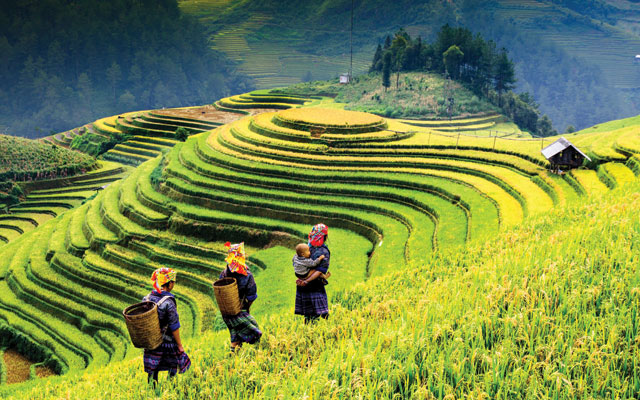Ecotourism has been a lifeline for northern Vietnam, a region known for its remarkable landscapes and cultures, but can it prevent over- commercialisation and overexploitation?
North Vietnam – in particular Sapa – is shaping up to be the country’s ecotourism hub, as more operators develop tours and homestays connecting with local ethnic minority communities, predominantly Hmong and Dao.
 Jack Bartholomew, general manager of Ground Asia, said: “The potential in north Vietnam is huge. You have a whole range of ecosystems – forests, national parks, limestone ecosystems and a massive potential for cultural preservation as the area is home to numerous tribes and ethnic groups.”
Jack Bartholomew, general manager of Ground Asia, said: “The potential in north Vietnam is huge. You have a whole range of ecosystems – forests, national parks, limestone ecosystems and a massive potential for cultural preservation as the area is home to numerous tribes and ethnic groups.”
Nguyen Thu Trang, director of sales and marketing at Mai Chau Ecolodge, agreed: “Ecotourism is undoubtedly a burgeoning niche market within the Vietnam tourism industry.”
Besides an increase in ecotourism products, Shu Tan, founder and director of Sapa O’Chau, said the highway connecting Hanoi to Lao Cai, which debuted in 2015, has been key to opening the area up to visitors as it cuts the bus journey from 12 hours to six.
She said: “The increase in accessibility allows tourists to spend more time seeing Vietnam rather than travelling from one place to another.”
However, as development in Sapa picks up pace – triggering an oversupply in hotels and guesthouses, and a surge in room prices – tourism is trickling into nearby, less-developed provinces.
Other areas in north Vietnam, Lang Son, Ha Giang and Son La, are also growing in popularity. Despite the lack of infrastructure, their off-the-beaten-track appeal has seen more international visitors incorporating these destinations into their itineraries, noted Bartholomew.
In February, a masterplan to develop Mau Son tourism zone in Lang Son was given the green light, and 1,500ha was devoted to developing a range of tourism products relating to the landscapes and the native Dao, Tay and Nung ethnic minority culture. A target to attract 800,000 visitors by 2025 has been set.
But industry players are quick to point out that careful development is essential for the region to retain its authenticity. Waste management plans, for instance, need to be put in place to preserve the unique environment and ecology.
Expressing her concerns about the downsides of ecotourism, Nguyen said: “(Ecotourism) can have a detrimental effect instead. As a destination’s popularity grows, resources sometimes become overtaxed and natural attractions suffer from (congestion). Visitors can also disrupt wildlife, resulting in changes to their feeding and mating habits.”
Overdevelopment is another concern, especially as domestic tourists surge.
“What you see now is handful of sites getting a massive number of visitors while many others remain unvisited,” said Bartholomew. “It also means the tourist dollar isn’t reaching those other places.”
Stressing the need for proper development plans in ecotourism destinations, Bartholomew added: “Hopefully some lessons can be learnt (but) the outlook is positive; the potential is huge.”
This article was first published in TTG Asia August 2017 issue. To read more, please view our digital edition or click here to subscribe.




















